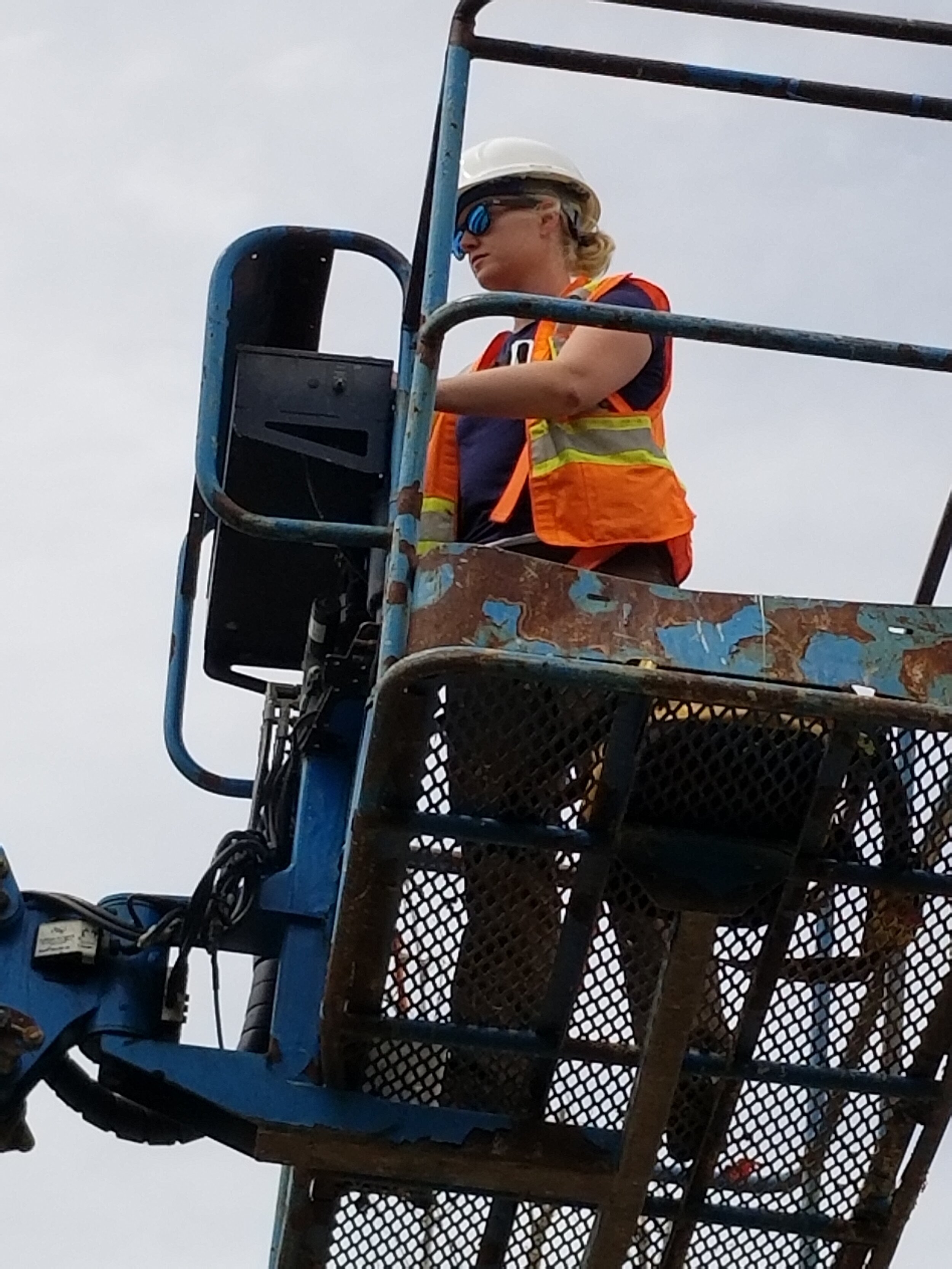Multitasker extraordinaire
Juggling lots of moving pieces keeps Lauren Mulkerns on her toes
Q: What is your position and what are your responsibilities?
A: I am the environmental manager and part of our Technical Services department at Brampton Brick Limited, and I’m mainly responsible for the regulatory compliance of our facilities. These are a mix of a shale quarries, clay brick and concrete manufacturing facilities. I keep in regular contact with environmental regulations, updated environmental approvals, procedures, and any regulated reporting, including greenhouse gas management or NPRI (National Pollutant Release Inventory). I’m also the main point of contact with the Ministry of Environment, Conservation and Parks as well as the Ministry of Natural Resources and Forestry. I assist with changes to site plans, rehabilitation efforts and any mitigation to be done on site. As well, I address any complaints received from the public and meet with them directly at stakeholder meetings or through our complaint process.
What is it about your job that other people wish they got to do?
I have the opportunity to be involved in all aspects of manufacturing. I’m able to work on site plans before a site has been licensed, sourcing raw materials to manufacturing and even in to the yards before shipping. This also includes working with our IT, Technical Services, and financial departments since the environmental sector touches nearly every department. I’ve been able to meet nearly everyone in our organization and work with them, which is something I really value.
Q: What do you find most challenging in your work?
A: The biggest challenge is what also makes the job the most fun – keeping up with the schedule! Due to the wide array of responsibilities and sites that we have, you can be at the quarry in the pouring rain and mud one moment, then have a formal meeting in the afternoon. As well, each project for each site is unique and it can be challenging to keep on top of all of the moving pieces. Our sites all have different contractors, consultants and challenging areas; the same project in different sites will look and be managed very differently.
Q: Describe your typical day on the job and how the work you do contributes to your company.
A: A normal day is usually a combination of working in the office managing projects or on site. Project management includes speaking to site managers, contractors, consultants and reviewing or providing reports. Working at our sites is comprised of conducting environmental audits and sampling. We conduct regular environmental audits to ensure our sites are well maintained, and potential risks to the environment from our operations are addressed. For sampling, we take regular samples of the air and surface water as part of our environmental approvals to ensure we comply with our approvals and MECP criteria.
There is always a balance between ensuring the environment and your neighbours are looked after and maintaining the operations of the company. Environment and industry are typically seen as conflicting forces, but they don’t have to be. It’s not always an easy path to balance the two, but ultimately limiting the environmental footprint of operations is positive for operations, workers and neighbours. Dust mitigation is an example of this: mitigating dust on site can be an operational burden at times, but it ultimately creates a safer work atmosphere and can potentially lead to less equipment maintenance.
Q: How did you get interested in this field?
A: It’s not a far stretch for me to be in this field – I’ve always loved being outside. I find nature astounding and it demands so much respect. On the other hand, I find manufacturing so interesting because it’s a big but small world. I can speak to many operators about crushing equipment or stockpiling, but the general public have no clue of the amount of preparation and planning that goes into that stockpile, and I’m fascinated by that.
Q: What sort of education do you have that is relevant to your job?
A: I went to the University of Toronto for a Bachelor of Science in biology and environmental science, then attended Sheridan College for their Environmental Control program. Understanding elements of the environment, including soils, groundwater, surface water and air interaction, is critical. University will give you that background and the ability to understand what is happening. Sheridan College was great because it gave me those hands-on skills for sampling or lab work. Having the two backgrounds allows me to hold different conversations. An example of this is when I’m speaking to an ecologist about changes to a site plan. I agree with their observations, but I’m also able to respond to our needs as an operator and as someone who will eventually be responsible for that mitigation strategy.
Q: Where do you see the industry going in the next few years?
A: I see it changing to align closer with waste management. Recycled materials will become more desirable and I think the aggregate industry will be able to capitalize on this need. I also think the environmental industry will become less of a specialized industry. Consultants and experts will always be there, but I think my position will become less common going forward and environmental knowledge and needs will come into the hands of operators. I see a potential future where site managers will be responsible for their environmental compliance, approvals and site plans.
Q: What advice would you give to others looking for a career in the aggregate industry?
A: Take on the challenge! It can be a loud, dusty, too-hot and too-cold work environment, but the career pathways and potential employers are endless.

